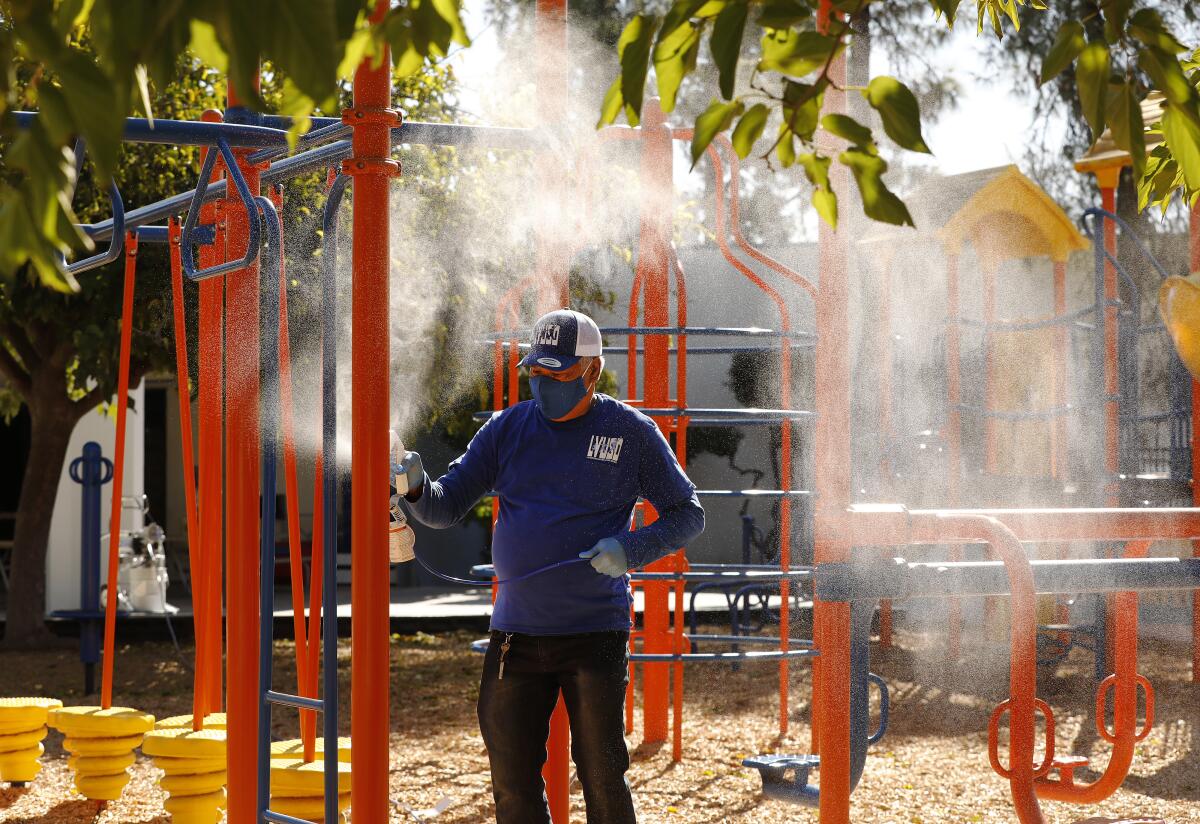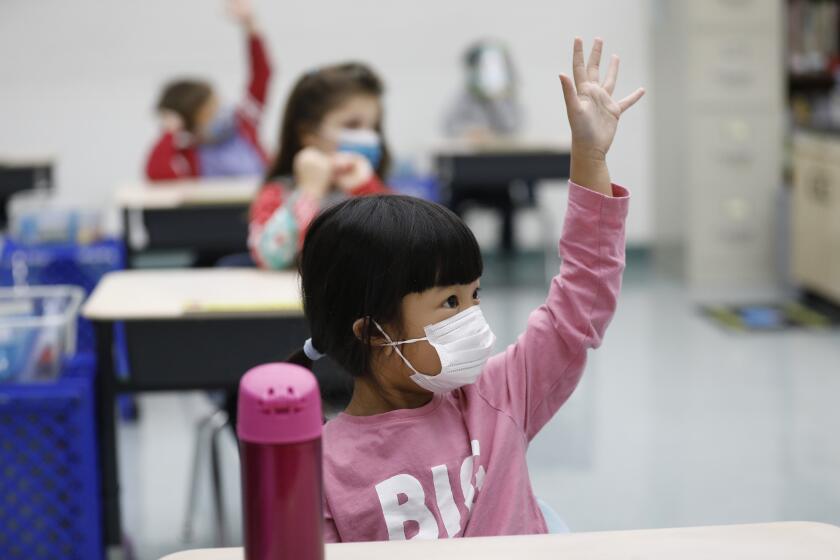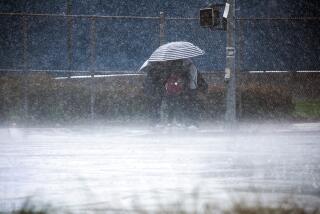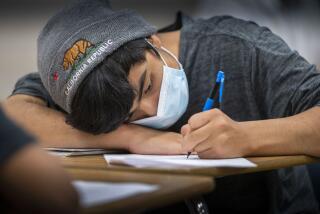COVID-19 cases spike at partially reopened L.A. schools. How worried should we be?

- Share via
Coronavirus infections among staff and students at partially reopened L.A. County schools spiked in the past week, but incomplete data make it difficult to gauge whether educators and parents should be worried or assured during the unprecedented surge in community transmission.
Last week, 164 schools in the county had reported coronavirus infections since the start of the school year. This week, that total jumped to 263. Last week a total of 169 staff and 63 students had been infected; one week later the cumulative numbers were 275 staff and 103 students, a 63% increase.
The latest numbers on infections of staff and students on campuses were provided Thursday to schools leaders and school nurses in two calls with public health officials. The Times obtained the information from interviews with those on the calls and from an audio recording.
Last week, 13 schools were linked to outbreaks since the school year began. Three more outbreaks were reported this week. Health officials define an outbreak as three or more cases within a 14-day period that appear to have a connection.
Dr. Robert Gilchick, child and adolescent health section chief, saw an upside in the briefing with school nurses. Even the outbreaks, he said, resulted in relatively few cases, typically three or four. And most schools reported one case only. On balance, he said, it appears that school safety protocols are working.
“The safety protocols and infection controls that have been instituted may be working very well,” he said on the call.
Compared to 1.43 million public school students in L.A. County and 3,185 public and private schools, the infections associated with schools seem negligible. However, there are no data on the number of students and staff on campuses. Both school district leaders and state legislators have complained about this lack of data at the county and state level.
No schools can legally offer on-campus instruction to all enrolled students. Instead, schools can apply for waivers to serve students in transitional kindergarten through second grade. And schools also can bring up to 25% of enrollment on campus at a time to serve students with special needs.
The county collects figures on which schools received waivers and which schools filed paperwork to provide services to students with special needs, but there are no reliable numbers on how many students are receiving services on campuses in the 80 school districts in the county. In L.A. Unified, about 2,000 of more than 460,000 students have returned to campus for tutoring.
Some researchers have concluded that the infection rate at schools tends to mirror what is going on in the community, and that reopening campuses does not make the community infection rate worse — provided that appropriate safety protocols are followed. Other experts consider the matter unsettled.
Safety protocols include sending home groups of students who come in contact with an infected individual. That’s one reason why school officials have said it could be problematic to fully reopen campuses at a time of widespread community transmission— classes could be frequently disrupted by quarantines each time a student or staff member becomes infected.
The numbers this week came as officials in one Southern California school system concluded they had seen enough.
The San Bernardino school system will keep its campuses closed for the remainder of the school year, a response to the surging coronavirus crisis in their county. The state’s eighth-largest school district, with about 47,000 kindergarten through 12th grade students, may be the first in the state to make the difficult decision to keep students online.
Others districts throughout California — including Los Angeles Unified — do not yet know when they will fully reopen for in-person classes. All Southern California counties are in the most restrictive purple tier and under state rules schools can’t fully reopen until a county moved to the next improved red tier.
In recent weeks, more schools have been providing increased in-person services and instruction to more students. But the ongoing pandemic surge threatens to move school operations in the opposite direction.
This push-and-pull drama is playing out across the country, according to a brief released Wednesday by the Center on Reinventing Public Education at the University of Washington. While almost 16% of America’s school districts said they are offering more in-person schooling now than they did at the start of the current school year, roughly 14% have shifted toward more remote learning. Schools in New York City, the nation’s largest school system, shifted back to remote learning on Thursday as cases surge across the city.
Avoiding potential instability was a factor in the San Bernardino decision.
Schools reopen during coronavirus, COVID pandemic
“The board’s decision is consistent with its steadfast commitment to safety for students and employees,” the district said in an online announcement. “This decision will enable district staff to focus greater resources toward strengthening distance learning while also allowing families to better plan.”
The announcement stated that the action was taken “after carefully weighing local COVID-19 figures that show the virus is spreading at alarming rates and families living in its attendance boundaries are especially at risk.”
Data from the San Bernardino County Health Department indicate that the coronavirus infection rate within the school district’s boundaries is among the highest in the county.
The district’s decision underscores once again the disparity between school systems that serve more affluent communities with lower virus transmission rates versus those that serve low-income neighborhoods, which are more likely to have higher coronavirus rates.
About 9 in 10 San Bernardino district students are members of low-income families. These families also have more difficulty providing supervision and support for children forced to do all their schoolwork online. Families in low-income areas also have been among the last to receive the technology needed to do their schooling from home.
More to Read
Sign up for Essential California
The most important California stories and recommendations in your inbox every morning.
You may occasionally receive promotional content from the Los Angeles Times.












